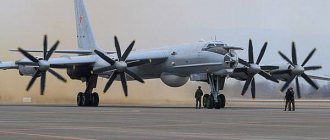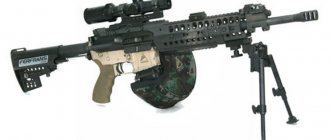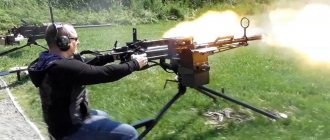Su-35: What's wrong with the Irbis radar? Even the Algerians didn't like him
According to the nameless author of the American military magazine Military Watch, Algeria refused to purchase the Su-35 only because the fighter had not solved the problem of integrating the radar system with electronic scanning.
We are talking about second-generation active phased array radars, known in the West as AESA technology (an abbreviation for Active electronically scanned array). They say that Su-35 aircraft are 60% more expensive than the Su-30 due to their “smart guts,” but the “performance of a set of sensors” does not meet the requirements of the time.
What is this? Information war, or is it really the truth that the top managers of our defense industry have been “tactfully” keeping silent about in recent years? There have been discussions for a long time that the Soviet military legacy has limited development potential, as well as the fact that the lag in scientific and technological progress could be fatal for Russia.
By the way, President Putin : “It is the lag that is the main threat and that is our enemy. If we don’t turn the situation around, it will inevitably intensify. It’s like a serious chronic disease that tirelessly, step by step, undermines and destroys the body from the inside.”
So, the American magazine MW recalls that Algeria is consistently the second largest customer of Russian arms exports after India and today has the largest defense budget on the African continent, more than double that of its rival Egypt. For our defense industry, this is the goose that lays the golden eggs.
A year ago, rumors spread in the media, including foreign ones, that Algeria would become the first buyer of the newest Su-57, according to the NATO classification Felon (“Criminal”). They also hinted about this in Russia.
Has the “American” messed up again?
At first glance, one might come to the conclusion that the main reason for the decline in the export potential of the ultra-maneuverable Su-35S in the North African region, as well as its defeat in the “competitive sparring” with the Rafale, is the presence in the defense structures of Algeria and Egypt of the tough lobby of the US State Department and the Pentagon. Moreover, overseas representatives of these departments have repeatedly put forward an ultimatum to Algeria and Cairo demanding that they refuse to purchase Russian cars, failure to comply with which was fraught with a number of painful economic sanctions against North African states.
Super-maneuverable Su-35S.
© wikipedia
Meanwhile, a detailed comparative analysis of the parameters of the Su-35S and Rafale F3R airborne radar systems, unfortunately, confirms the objectivity of the decision of the defense departments of Algeria and Egypt to abandon the brainchild of the Sukhoi Design Bureau in favor of a machine from Dassault, the reason for which was announced by Military Watch Magazine. After all, the Egyptian defense department today continues to implement a number of multimillion-dollar contracts with Rosoboronexport (including the purchase of promising Ka-52/K attack and reconnaissance helicopters), despite the threat of sanctions pressure from Washington.
High-energy radars based on passive phased arrays are far-sighted, but vulnerable to modern electronic warfare systems.
Ferromagnets significantly reduced the EPR of the Su-35
Home » Real story » Aircraft of the present and future » Ferromagnets significantly reduced the ESR of the Su-35
Aircraft of the present and futureAircraft of the present and future
admin 04/09/2013 268
0
in Favoritesin Favoritesfrom Favorites 0
The Chinese PLA daily newspaper published an article “Su-35 can detect MiG-21 only at a distance of 100-150 km,” news.ifeng.com reported on April 8.
The design of the Su-27 fighter has a huge potential for modernization and is constantly being improved; a carrier-based fighter, a front-line bomber, a combat training aircraft and others, such as the Su-30/32/34/35/37, have been created on its basis. The current Su-35 can be presented as the “top of the family.” It took 20 years to develop it.
The Su-35 inherited all the strengths of the Su-27. The fighter has 12 hardpoints, a maximum combat load of 8 tons, and can perform air superiority fighter missions and strike ground and sea targets. Its power plant in the form of two 117C turbofan engines is among the most advanced in the world in terms of its characteristics. The engine life is increased by 2-2.7 times compared to the AL-31F. Major repairs are carried out after 1500 hours of operation compared to 500 for the AL-31F, service life is increased to 4000 hours instead of 1500 for the base model.
Titanium alloys are widely used in the airframe of the aircraft, the maximum speed is 2.35M.
Stealth characteristics have always been a weak point of the Su-27 due to the presence of two straight engine nacelles and a large reflective cockpit surface. In this regard, the Su-35 has made great progress. Russian developers have developed a ferromagnetic material that is applied to the inlet openings of the air intakes and to the engine compressor blades, as a result of which the radar signature of the aircraft is significantly reduced. This coating does not affect the operation of engines and anti-icing systems, and can withstand air flow temperatures of up to 200 degrees Celsius.
The Irbis onboard weapon control radar with passive phased array is capable of detecting air targets at a range of 350-400 km. Fighters with an effective dispersion area (RCS) of 3 square meters. m are detected at a distance of 100-150 km. The radar is capable of tracking 30 targets simultaneously and guiding 8 missiles with an active homing head at 8 of them.
The MiG-21 fighter has an ESR of 3 sq. m and is often used as an air target for the Su-30MKK fighter, which can detect it at a range of 100 km. The American F-16 also had a radar signature similar to the MiG-21, but its latest versions have an ESR of less than 1 square meter. m.
Sensors and avionics
The most important improvements in the Su-35 compared to its predecessors are related to electronic devices. It is equipped with a powerful Khibiny electronic warfare system, designed to distort radar waves and disorient enemy missiles.
It is expected that the H035 Irbis passive phased array radar will help in the fight against stealth aircraft. It is capable of tracking up to thirty air targets with an ESR of three meters at a distance of up to 400 km, and targets with an ESR of 0.1 meters at a distance of more than 80 km. The Irbis also has an air-to-ground mode in which it can fire precision-guided munitions at four ground targets.
The radar is complemented by the OLS-35 optical-location station, which includes an infrared search and tracking system with a range of 80 km, a potentially serious threat to stealth fighters.
The cost of the Su-35 is estimated at 40-65 million US dollars. Export contracts indicate a price of about US$80 million per unit.
mil.ru / Press service of the Ministry of Defense of the Russian Federation
Story
The Su-35 is an upgrade of the Soviet Su-27, designed to compete with the F-15 concept, a heavy twin-engine multi-role fighter that combines excellent speed, a large array of weapons and high maneuverability.
The aircraft discussed in this article is correctly called the Su-35S, it does not have a front horizontal tail and is the most capable fighter of the Flanker family. Its development began in 2003 at the aviation production association in Komsomolsk-on-Amur, a branch of PJSC ". The first prototypes appeared in 2007, and production began in 2009.
mil.ru / Press service of the Ministry of Defense of the Russian Federation
Problems with "vision"
Construction vehicles for re-equipping fighter squadrons of the Russian Aerospace Forces and export Su-35S still have the most powerful airborne radar N035 “Irbis-E” in the modern history of tactical aviation with a peak power of about 20 kW and the ability to detect targets with an EPR of one square meter at a distance of about 270 —300 kilometers. It is this coefficient of effective reflective surface that corresponds to the Rafale family of fighters.
Radar N035 "Irbis-E" with a peak power of about 20 kW.
© cont.ws
Nevertheless, the Irbis-E radars are built on the basis of outdated passive phased array antennas (PFAR) with a low level of noise immunity. This architecture does not allow the Irbis-E radar to form dips in the radiation pattern in the direction of enemy electronic jammers. As a result, the receiving path of this radar station is partially suppressed, reducing the effective target detection range by 30-60% (depending on the power and amplitude-frequency characteristics of the enemy jamming station).
Against this background, the French Rafale F3R multirole fighters are equipped, although not the most high-energy, but much more advanced RBE2 airborne radars based on active phased array antennas (AFAR). All transmitting and receiving modules of these stations are equipped with individual gallium arsenide microwave transistors and individual control attenuators, which allows the formation of the above “dips” in the radiation pattern in the direction of enemy electronic warfare sources. In this case, the suppression of the radar receiving path is minimal, and the effective range is reduced by only 15-25%.
Air battle over the Baltic. The American “stealth” F-35 lost dry to “Sukhoi”
The notorious American stealth fighter F-35 unconditionally lost its first ever air battle to the Russian Su-30SM fighter. In the skies over the Baltic, a fifth-generation stealth aircraft was spotted and recorded as a target, after which a fourth-generation Su-30SM approached it, flew side by side, then turned on its side, demonstrating its missile armament to NATO, and slowly left. They say that the Russian pilots covered their eyes with their hands - so as not to offend their Italian colleague with the terrible assumption that they could see him. All this is happening against the backdrop of a scandal in the United States, where the Pentagon itself is making a difficult decision to abandon further purchases of the F-35...
Of course, this can only be called a “fight” conditionally. The planes of the two potential opponents did not fire at each other.
An F-35A fighter of the Italian Air Force was just flying in the sky over the Baltic Sea. The Italian fighter was on duty in the format of the so-called air police, as if protecting Estonia from the aggressive Russians. The planes arrived in Estonia on a rotation basis and were based at Ämari airfield.
The point of the situation here is that the F-35A is considered an “invisible” aircraft. American advertising claims that its effective dispersion surface (ESR), that is, reflectivity, is only 0.005 square meters - about the size of a tennis ball, as the advertising shouts. To what extent this corresponds to reality was still unknown - in close contact we were not able to “illuminate” these machines live from aircraft radars. If the analogy with the (also super-duper, fifth-generation “invisible”) F-22A “Raptor” is correct, then in reality it may be an order of magnitude, or even two, more. This is also good, but in this case, our Su-35SM, equipped with the N035 Irbis radar, can detect a similar target at a distance of 165-240 km.
But a lot depends on the range. Vehicles that are difficult to see in the X-band (like the F-35), that is, centimeter waves, are clearly visible from fighters equipped with L-band radars, that is, in decimeter waves. There have been references in the press that the Su-30SM can (or will be able in a modernized version) to detect targets with an EPR of about 0.2 sq.m at a distance of 190-200 km. And this is not advertising, but the actual EPR of the F-35A.
We flew, we saw, we shot down
Be that as it may, the Russian two-seat fighter Su-30SM, designed to gain air superiority, powerful and super-maneuverable, saw the Italian “invisible”. And during the first approach in history between both aircraft, he came within a short distance of him.
Whether it was pointed from the ground or whether he saw it himself is not the point. The important thing is that during its operation, the Russian plane flew next to the “Italian” for some time, obviously filming and monitoring all its necessary characteristics and signatures. Including the actual ESR value. Then he made a maneuver, which in the Italian sector of NATO aviation is usually called non è professionale e irresponsabile. In general, he walked in front of his “partner” unprofessionally and irresponsibly, showing him his belly with missiles on ten suspension points. The signal for all military pilots in the world is clear: do not violate the border, otherwise all this wealth may be yours.
After which the Russian rolled aside and left.
That's the whole "fight". Which, however, in technically peacetime conditions showed everyone who needed everything they needed. Namely: a Russian fighter, exceeding the F-35 in speed and maneuverability, would have already chopped it up with the striking elements of its missiles if such a meeting had taken place in combat conditions. Because although the Su-30SM does not indulge in invisibility, being an attack aircraft, that is, in any case, actively shining with its radar, and with its EPR of 5 sq.m., a “colleague” will see it 200 kilometers away, but in terms of maneuverability and speed At Mach 2, it will be quite capable of dodging both AIM-120 C/D AMRAAM (or ASRAAM) medium-range air-to-air missiles that the F-35 is armed with.
But in real conditions, the American vehicle, with its really low speed and agility, would have been intercepted by both naval and ground air defenses and would have received from the “drying” also medium-range R-27 missiles at a distance of up to 140 km.
But the background is also important
Yes, the background against which the described meeting took place is also important.
The fact is that in the US fighter fleet renewal program there was no room for new orders for the F-35! Of course, voices immediately began to be heard there that, they say, there were too many of these machines already, new ones were simply not needed, because the course was set to produce a modernized version of the F-35 Block 4 by mid-2022. And that instead of increasing the number of these aircraft It’s better to “spend money on keeping the machines in good condition.”
It sounds good. Only “suitable condition”, as it turns out, means... purchasing engines for these fighters! The lack of which, it turns out, “leads to the fact that aircraft become incapable of flying at high speeds.”
Well, of course - only passenger planes can fly at cruising speeds of 850 km/h in the modern sky...
In general, talk is talk - and they are clearly launched by the Lockheed Martin corporation, which now finds itself in very cramped conditions - but the American press itself writes this:
The biggest surprise was the lack of an order for additional F-35 fighters.
But during the 2022 fiscal year, $1.4 billion will be spent on the purchase of 12 F-15EX fighter jets, which are produced by Lockheed’s competitor, Boeing Corporation.
Therefore, according to some observers, the term “mid-2020s” may actually mean “never.” Because the very attention of the US Air Force to the F-15EX means that the F-35s are already regarded at this level as bad, unreliable, and unpromising machines. And also prohibitively expensive. So it’s better to let the allies and clients of the United States pay for them, who have found themselves drawn into a kind of “fighter pyramid.” That is, they have already paid their money at the development stage, some of them received contracts for the production of certain parts for an American car, the contracts for them are valid until 2028 - and now they have nowhere to jump off this pyramid.
An excellent business scheme: grandiose advertising - proposals for investments - development of models at the expense of a trusting customer - advertising - applications - contracts - money - participation in production - purchases - money. And today, approximately 20 countries according to this scheme turned out to be real not “freeloaders”, but “partners” of the States. But it doesn’t make it any easier for them. Like the easily detected and supposedly shot down “Italian” over the Baltic.
And it wasn’t even his “classmate” F-35 that caught him - the Russian 5th generation fighter Su-57...
Required: "Beetles" and "Squirrels"
The RBE2 radars of the French Rafale fighters are forcing the Sukhoi Design Bureau to implement a program to re-equip the Su-35S with the latest Belka or Zhuk-AME radars.
We come to a completely logical conclusion that in a long-range air battle against the Su-35S, pilots of the French Rafale F3R, using on-board Spectra electronic warfare stations in the X-band, are able to reduce their own detection range by the Irbis-E PFAR radars from 270 to 140-120 kilometers . At the same time, the more noise-resistant RBE2 radars of French fighters will take bearings from larger-signature Su-35S at a distance of 170-200 kilometers, after which target designation will be issued to long-range air-to-air missiles MBDA Meteor.
French light multirole fighter Rafale F3R.
mostbeautifulplanes.com
A similar duel situation was simulated in mid-July 2021 during a long-range combat air exercise between export versions of the Su-35S and Rafale F3R in Egyptian airspace. According to competent sources in the Egyptian Air Force Command, the French machine established air supremacy, while the Khibiny-M container electronic warfare system was unable to suppress the operation of the Rafale RBE2 AFAR radar. An effective remedy in this case can only be the re-equipment of all operational and export Su-35S fighters with the latest airborne radar systems based on the Zhuk-AME or N036 Belka AFAR from the element base of the fifth generation Su-57 fighters.









